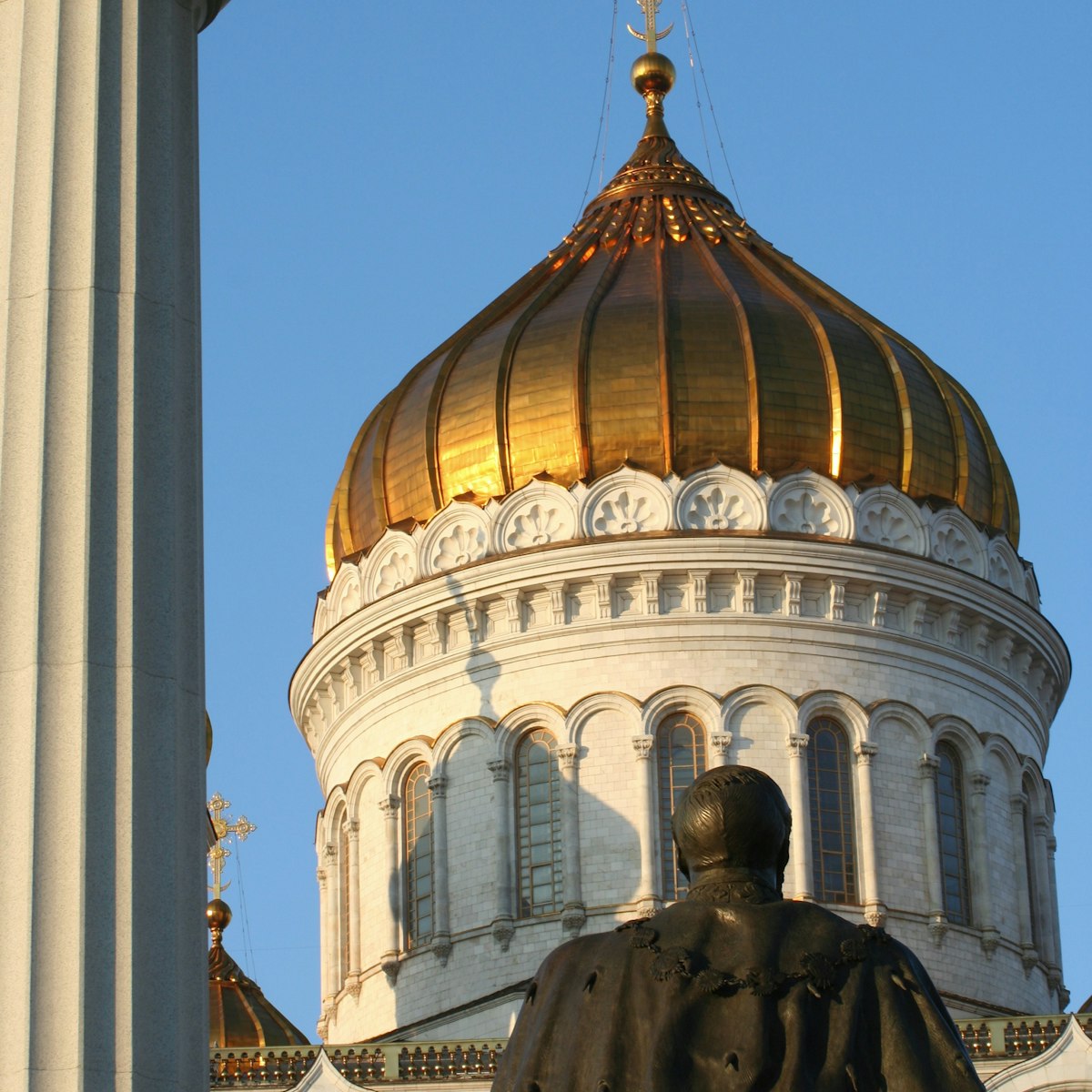With its two golden domes rising above the eastern side of Sobornaya pl, the Ivan the Great Bell Tower is the Kremlin's tallest structure – a landmark visible from 30km away. Before the 20th century it was forbidden to build any higher in Moscow. Purchase a ticket to the architectural exhibit inside for a specifically timed admission to climb the 137 steps to the top for sweeping views.
Ivan the Great houses a multimedia presentation of the architectural history of the Kremlin complex. Using architectural fragments and electronic projections, the exhibit illustrates how the Kremlin has changed since the 12th century. Special attention is given to individual churches within the complex, including several churches that no longer exist. The 45-minute audio tour ends with a 137-step climb to the top of the tall tower, yielding an amazing (and unique!) view of Sobornaya pl, with the Church of Christ the Saviour and the Moskva-City skyscrapers in the distance.
The bell tower is only open when weather allows. Purchase your ticket (for a specific admission time) at the ticket office in Alexander Garden before you enter the Kremlin grounds. The number of people admitted for each time slot is extremely limited, so it may require some flexibility.
The bell tower's history dates back to the Church of Ioann Lestvichnik Under the Bells, built on this site in 1329 by Ivan I. In 1505, the Italian Marco Bono designed a new belfry, originally with only two octagonal tiers beneath a drum and a dome. In 1600, Boris Godunov raised it to 81m. Local legend claims this was a public works project designed to employ the thousands of people who had come to Moscow during a famine, but historical documents contradict the story.
The building's central section, with a gilded single dome and a 65-tonne bell, dates from between 1532 and 1542. The tent-roofed annexe, next to the belfry, was commissioned by Patriarch Filaret in 1642 and bears his name.







